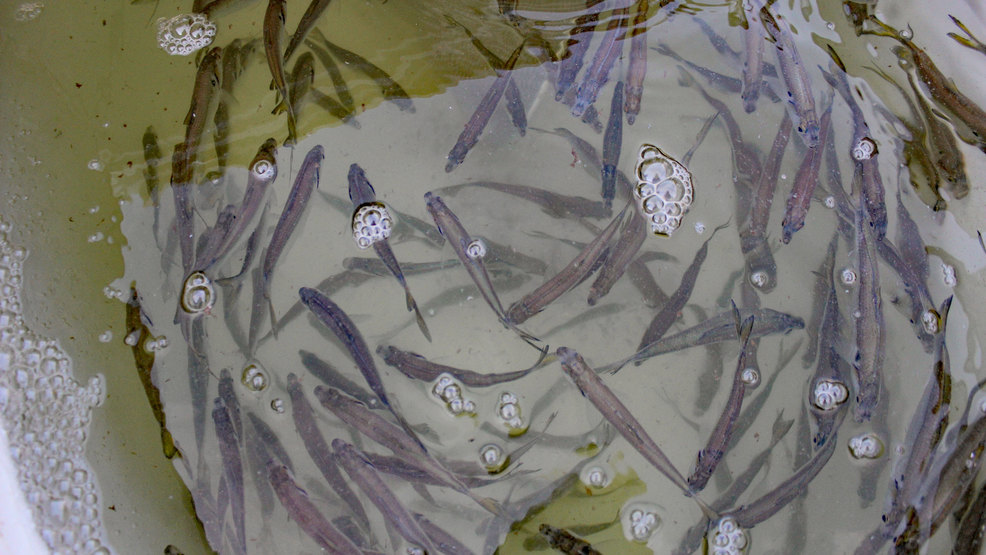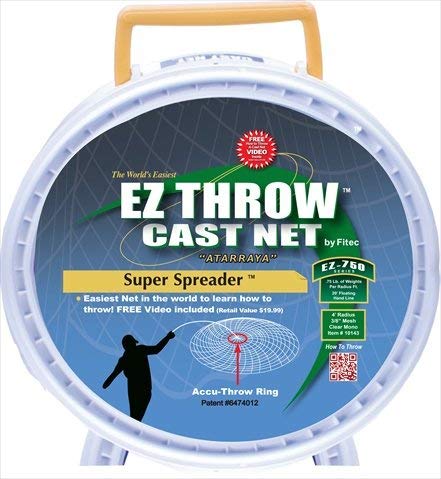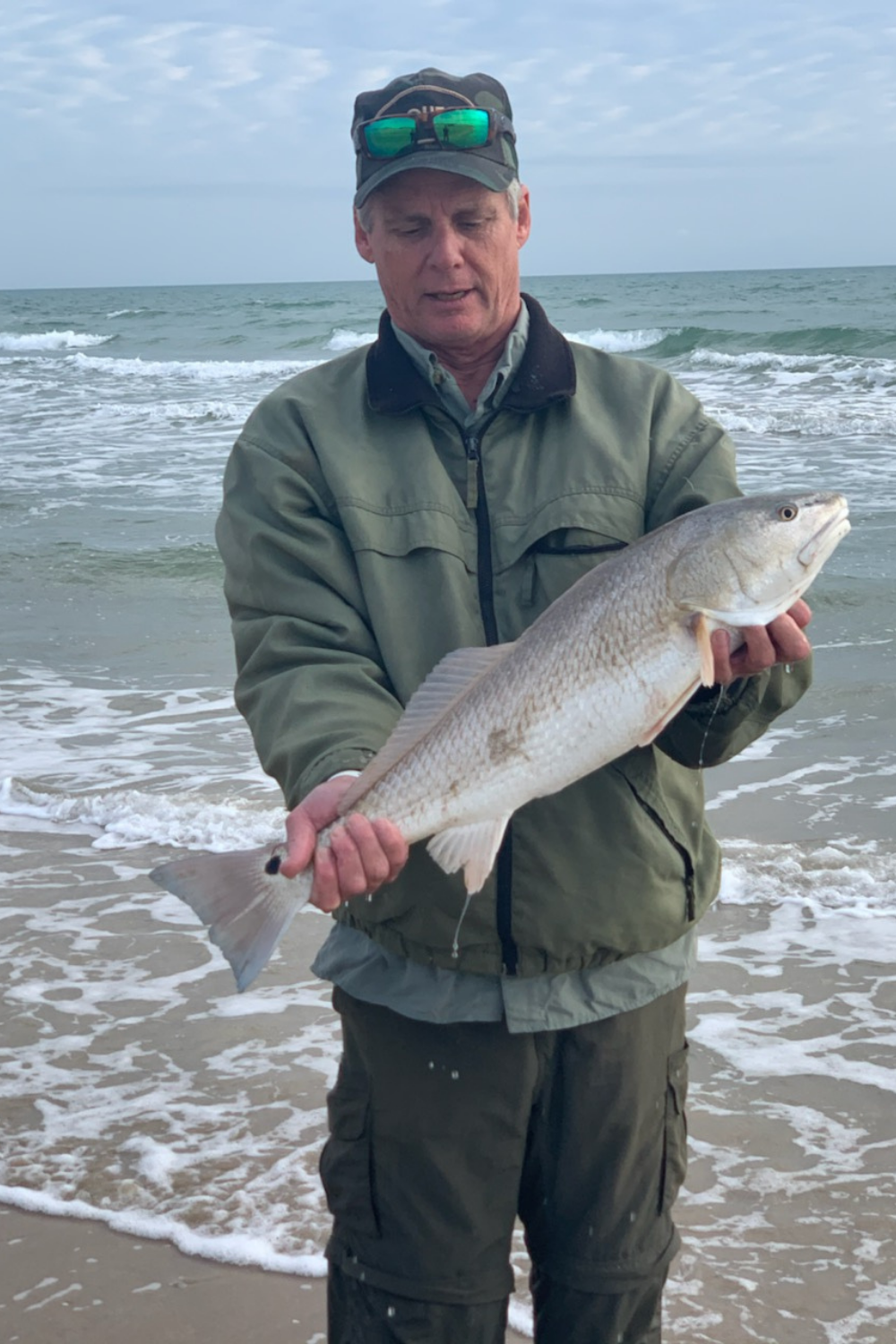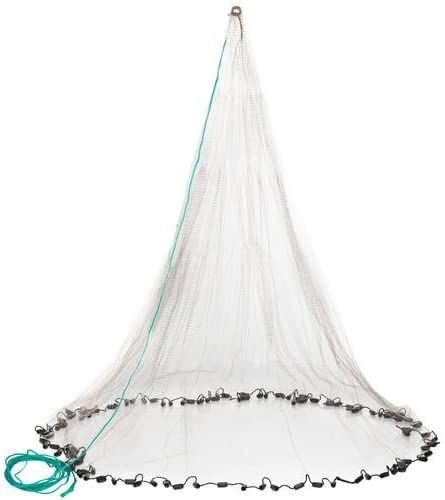When fishing, acquiring bait can get expensive and at times, or impossible as your local bait shop may be out when you get there. Having the ability to secure your own bait when you need it, is a valuable skill set. There are several methods of catching your own bait, but for this article, we will be discussing throwing a cast net to catch bait.
What is a Cast Net?
What is a Cast Net?
A cast net, also called a throw net, is a net used for fishing. It is a circular net with small weights distributed around its edge. The net is cast or thrown by hand in such a manner that it spreads out while it’s in the air before it sinks into the water. This technique is called net casting or net throwing. Fish are caught as the net is hauled back in. This simple device is particularly effective for catching small bait or forage fish, and has been in use, with various modifications, for thousands of years.

Contemporary cast nets have a radius which ranges from 4 to 12 feet. Only strong people can lift the larger nets once they are filled with fish. Standard nets for recreational fishing have a four-foot hoop. Weights are usually distributed around the edge at about one pound per foot (1.5 kilograms per meter). Attached to the net is a hand line, one end of which is held in the hand as the net is thrown.
The net is retrieved by pulling on the hand line, which is attached to a swivel at the top of the net. From this swivel a number of lines run down to the lead weights attached to the bottom or outside circle of the net. As the hand line is pulled these lead lines close the net on the bait by drawing the lead line up towards the top of the net.

Cast nets work best in water no deeper than their radius, any deeper and the bait will likely be able to swim out from under the net before it can sink over them. Casting is best done in waters free of obstructions. Reeds cause tangles and branches can rip nets, rocks, oyster shells and barnacles are all damaging to your nets.
You may choose to stand with one hand holding the hand line, and with the net draped over the other arm so that the weights dangle, or, with most of the net being held in one hand and only a part of the lead line held in the other hand so the weights dangle in a staggered fashion (approximately half of the weights in the throwing hand being held higher than the rest of the weights).
The line is then thrown out to the water, using both hands, in a circular motion rather as in hammer throwing. The net can be cast from a boat, or from the shore, or by wading.
Essential Surf Fishing Gear:
- Surf Fishing Rods, surf rods are typically longer and heavier duty than standard rods. – read more.
- Surf fishing Reels,larger and stronger with greater line capacity to handle big fish. – read more.
- Surf fishing Rod and Reel Combos, pre-matched rod and reel set ups for surf fishing – read more.
- Sand Spike Rod holder, holds your rods securely while you wait for that big bite. – read more.
- Surf Fishing Rigs, terminal tackle for fishing the surf. – read more.
- Surf fishing Carts, for beaches that won’t allow vehicles you need a way to carry your gear – read more.
- Rod Racks for Vehicles, carry your rods out of harms way and easy to access- read more.
- Beach Camping Gear, in case you want to fish all night or for several days – read more.
How to Throw a Cast Net
There are several methods to throwing a cast net. Here are a couple of videos that give some great tips and instructions. I find it much easier to watch someone who knows what they are doing than to read a list of instructions. Watch these folks and just try to copy their techniques.
Cast nets come in a wide range of sizes from 3ft diameter on up. My best advice is to start small and work your way up until you get comfortable. Accuracy is much more important than size when it comes to throwing a cast net. If the net is too big for you to throw it correctly or accurately, you won’t catch much bait and you’ll just end up frustrated. I know, I’ve been there done that.
You want to be able to hit your target (bait) and have the net open up to full circle. It takes practice and you can even practice in your yard to get the hang of it first. Then you can move on to the water and practice on real bait. It will take some practice to spot bait, and to anticipate their movements when you throw the net at them. Once you get the hang of it, you’ll have the ability to catch fresh live bait when you need it, not just when the bait shop has it. And for a lot less money 😉

What Can You Catch with a Cast Net?
You can catch pretty much anything that swims that will fit inside the diameter of your cast net. Larger fish are usually too fast and too wary for you to catch, but sometimes one gets careless or distracted by chasing the same bait you’re trying to catch, and ends up in your net. Check out the article on the best live baits for surf fishing here.
Bait is what you’re after and the cast net is great for catching bait fish, shrimp and crabs.
Minnows, shad and perch in fresh water to mullet, mud minnows, shad, shrimp, croaker, pinfish and more in saltwater.
If you can find where the bait is hanging out, chances are, you can catch it with a cast net.

Best Places to Catch Bait with a Cast Net
Finding the bait will of course be key, and finding it in a location you can get close enough to throw your cast net. In fresh water, you can find bait around piers and boat docks, along shorelines and up in small feeder creeks. Be aware of underwater snags and obstructions. They can foul and tear your net, which will end your bait catching day.
In saltwater, look along shorelines, piers, boat docks, on the edges of channels and along grass beds. Another good way to find bait concentrations is to watch for birds either sitting on the water or diving into the water. They are looking for bait just like you, and they do it for a living, literally.
Frequently Asked Questions on Catching Bait with a Cast Net

How do I choose the right cast net size?
The size of the cast net depends on the type of baitfish you are targeting. As a general rule, select a net with a radius (half the diameter) of about 1.5 times the average depth of the water you’ll be casting in.
How do I throw a cast net properly?
To throw a cast net, hold the horn (center) of the net with one hand and gather the remaining net in your other hand. With a smooth, sweeping motion, throw the net out and release it, allowing it to spread out in the water. Practice is key to mastering the technique.
How do I retrieve the cast net?
After casting the net, let it sink for a few seconds to allow fish to swim into it. Then, quickly pull the net in by hand, making sure to gather the net from the bottom to prevent any fish from escaping.
How do I prevent the net from tangling?
To prevent the net from tangling, ensure that the net is properly spread out before throwing it. Avoid throwing into strong currents or areas with obstructions, as they can cause the net to tangle.
Can I catch other creatures besides baitfish with a cast net?
Yes, cast nets can catch a variety of small aquatic creatures, including shrimp, crabs, and other invertebrates. However, be sure to check local fishing regulations to ensure that you are allowed to catch these species.
What should I do if my cast net gets stuck or caught on something?
If your cast net gets stuck or caught on something, avoid pulling it forcefully as it may damage the net or other equipment. Instead, carefully backtrack the net’s path and try to dislodge it. If necessary, retrieve the net slowly to prevent further entanglement.
How do I care for and maintain my cast net?
Rinse your cast net with fresh water after each use to remove salt or debris. Avoid storing it while damp to prevent mold or mildew. Make sure to mend any holes or tears promptly to maintain the net’s effectiveness.
Remember, local fishing regulations and specific techniques may vary, so it’s always a good idea to consult local experts or experienced anglers for additional tips and advice when using a cast net in your area.
Catch some Bait and go Fishing

So, watch some videos, get you a cast net and get to practicing. Once you get the hang of it, go catch you some fresh bait and go fishing. You’ll save some money and be able to get bait even when the bait shops may be out. Also, it can be fun. Kind of like hunting. Catching bait can become as much sport as the actual fishing itself.
As always, try to leave it cleaner than you found it. Be safe, enjoy the journey, and good fishing. If you have any comments, questions, ideas or suggestions, please leave them in the comment section below and I will get right back to you. You can also follow us on Facebook: Rex The Beach Angler, Instagram: thebeachangler7, Twitter: @AnglerBeach, and YouTube: Man Art Creations.


A life long surf fisherman with 50+ years of experience, I am also an avid hunter and outdoorsman. I will be sharing my passion for the outdoors with you so be prepared for hunting, fishing, camping, hiking and more. Along with gear reviews and the latest trends and innovations in the outdoor industry.




